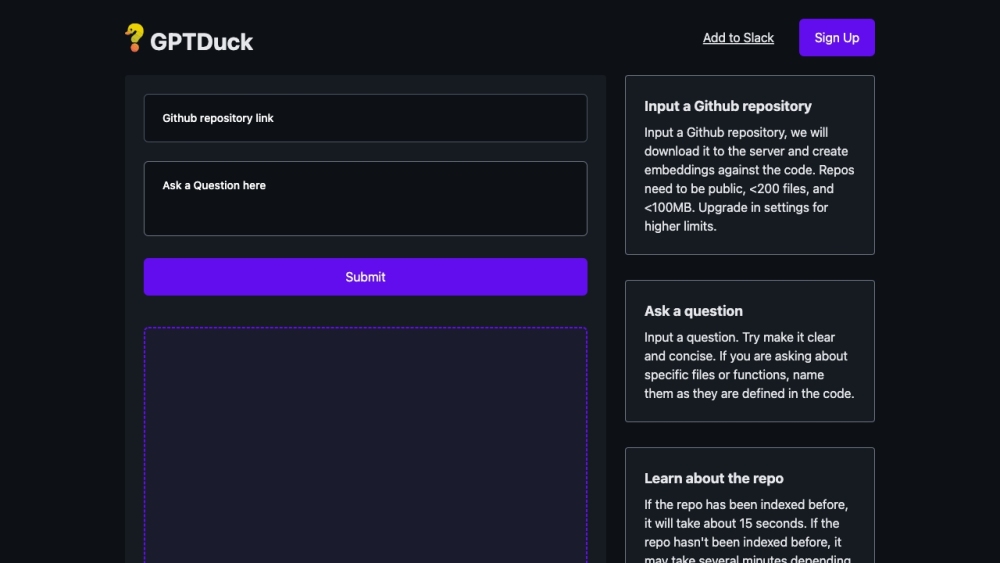GptDuck is a web service that provides question answering functionality for any Github repository. Users can input a Github repository, and the service will download it to the server and create embeddings against the code.
What is GptDuck?
GptDuck is a web service that offers question answering functionality for Github repositories. It allows users to input a repository, which is then downloaded to the server for analysis.
How Does GptDuck Work?
GptDuck works by creating embeddings against the code of a Github repository, enabling users to ask questions and receive answers related to the codebase.
GptDuck Features & Functionalities
- Question answering functionality
- Repository analysis
- Embedded code lookup
Benefits of using GptDuck
- Streamlined codebase analysis
- Efficient question answering
- Enhanced understanding of Github repositories
Use Cases and Applications
GptDuck can be used for codebase analysis, troubleshooting, and gaining insights into Github repositories. It is valuable for developers, code reviewers, and anyone working with codebases.
Who is GptDuck For?
GptDuck is ideal for developers, code reviewers, and anyone looking to gain a deeper understanding of Github repositories through question answering functionality.
How to use GptDuck
To use GptDuck, simply input the Github repository you want to analyze and let the service do the rest. Ask questions related to the codebase and receive answers in real-time.
FAQs
1. What kind of questions can I ask with GptDuck?
2. Is GptDuck free to use?
3. How accurate are the answers provided by GptDuck?
4. Can I use GptDuck for private repositories?
5. How does GptDuck handle sensitive information in Github repositories?
6. What sets GptDuck apart from other similar tools?
Conclusion
GptDuck is a valuable tool for gaining insights into Github repositories through question answering functionality. With its intuitive interface and efficient analysis capabilities, GptDuck is a must-have for developers and code reviewers looking to enhance their codebase understanding.


